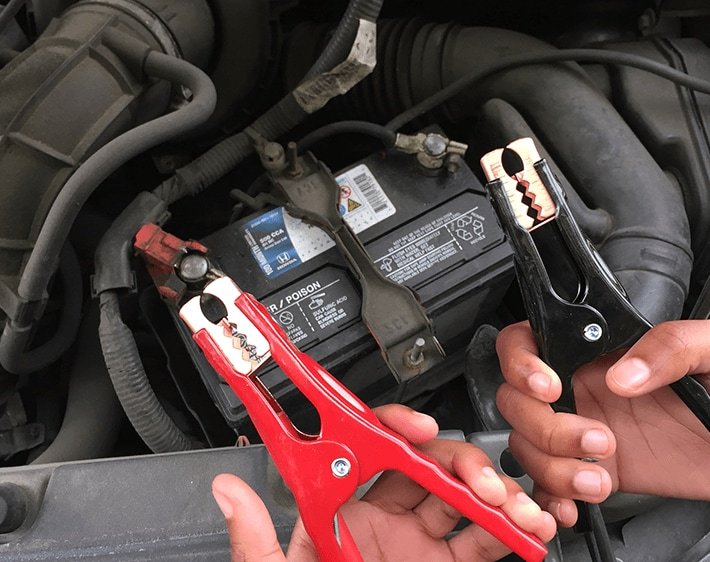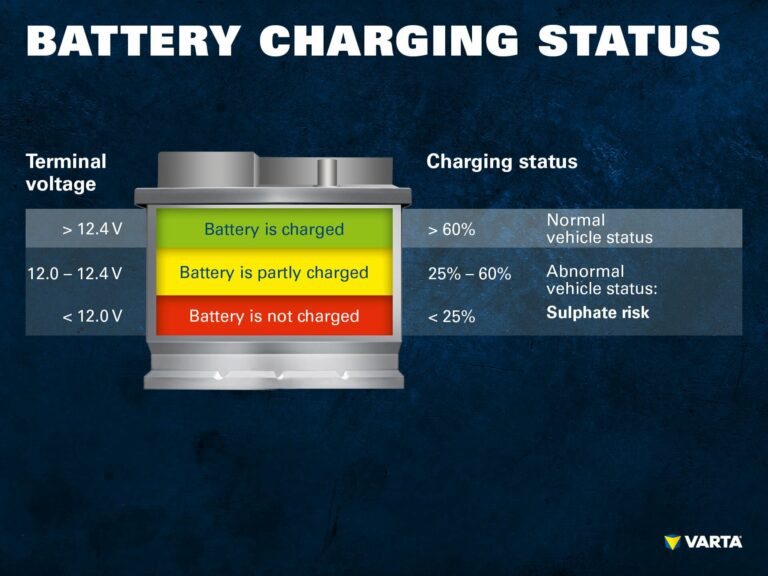Beginner’S Guide: How To Jump Start A Car Battery
Today we discuss How To Jump Start A Car Battery. Need help with jump-starting a car battery? We’ve got you covered! Dealing with a dead car battery can be frustrating, but worry not. In this guide, we will take you through the easy steps of jump-starting your car battery, ensuring you can hit the road again swiftly. Let’s explore how to jump-start a car battery like a pro.
How to Jump Start a Car Battery?
Knowing how to jump-start a car battery can be incredibly useful in cases of battery failure. Whether caused by leaving lights on or an old battery, being able to safely jump-start your car can help you avoid the annoyance of being stranded. This guide offers detailed instructions on successfully jump-starting a car battery.
Gather the necessary tools:
Before you begin the jump-starting process, it’s essential to gather a few tools that will make the task easier and more efficient. Here’s what you’ll need:
- Jumper cables – Ensure they are in good condition, with no visible damage.
- A functioning car with a fully charged battery to provide the jump-start.
- Safety goggles and gloves – These will protect you from potential sparks and acid from the batteries.
- A wire brush or sandpaper – Used to clean the battery terminals if they are corroded.
- The owner’s manual – Different car models may have specific instructions or precautions.
Identify the type of battery:
Before you proceed with jump-starting the battery, it’s important to identify the type of battery in your vehicle. There are two common types:
1. Conventional Lead-Acid Battery
This is the most common type of car battery and is easily recognizable by its rectangular shape and two terminals (positive and negative) on the top. It contains a mixture of water and sulfuric acid and requires extra caution when handling.
2. Absorbent Glass Mat (AGM) Battery
AGM batteries are common in newer vehicles and are identified by their smaller size and the absence of visible liquid. These batteries are maintenance-free and have a longer lifespan than conventional batteries.
Position the cars
Now that you have the necessary tools and have identified the battery type, it’s time to position the cars for jump-starting. Follow these steps:
- Ensure both cars are in Park (for automatic transmissions) or Neutral (for manual transmissions) and turned off.
- Ensure that the cars are not touching each other, and the distance between them is safe.
- Engage the parking brake on both vehicles.
- Open the hood on both cars and locate the battery.
Examine the battery terminals
Before you connect the jumper cables, it’s crucial to inspect the battery terminals for any signs of corrosion or damage. Corrosion can affect the flow of electricity and hinder the jump-starting process. Take the following steps:
- If the battery terminals are dirty or corroded, use a wire brush or sandpaper to clean them gently.
- Start with the negative terminal (marked with a “-” symbol) and then the positive terminal (marked with a “+” symbol).
- Ensure the cables are not touching each other or any metal surfaces while you continue preparing for the jump-start.
Connect the jumper cables
With both cars and the battery terminals prepared, it’s time to connect the jumper cables. Follow these steps:
- Take the red jumper cable and connect one end to the positive terminal (+) of the dead battery.
- Connect the other end of the red jumper cable to the positive terminal (+) of the functioning car’s battery.
- Take the black jumper cable and connect one end to the negative terminal (-) of the functioning car’s battery.
- Connect the other end of the black jumper cable to a clean, unpainted metal surface on the dead car’s engine block (away from the battery).
Jump-starting the car
Once the jumper cables are properly connected, it’s time to jump-start the car. Follow these steps:
- Start the functioning car’s engine and let it run for a few minutes.
- Attempt to start the dead car. If it doesn’t start, wait a few more minutes before trying again.
- If the dead car starts, let both cars idle for a few minutes to ensure the battery charges.
Disconnect the jumper cables
After successfully jump-starting your car, it’s crucial to disconnect the jumper cables correctly to avoid any potential hazards. Follow these steps:
- Turn off both cars’ engines.
- Start with the black jumper cable, then remove it from the engine block of the dead car.
- Remove the other end of the black jumper cable from the functioning car’s negative terminal.
- Remove the red jumper cable from the functioning car’s positive terminal.
- Lastly, remove the red jumper cable from the positive terminal of the dead battery.
Let the recently started car run
After jump-starting your car, it’s essential to let the engine run for a while to ensure the battery is fully charged. Follow these recommendations:
- Drive the recently started car for at least 15-20 minutes to allow the alternator to charge the battery fully.
- Avoid turning off the engine during this period to maximize the charging process.
Preventive measures and precautions
To avoid battery-related problems in the future, consider these preventive measures and precautions:
- Perform regular battery maintenance, such as cleaning the terminals and checking the fluid levels (if applicable).
- Avoid leaving lights or other electrical components on when the engine is not running.
- Keep a portable jump-starting device in your car for emergencies.
- If your battery frequently dies, have it tested by a professional to determine if it needs replacement.
How to Properly Jump Start a Car
Faqs for How To Jump Start A Car Battery:
To jump start a car battery, you will need a set of jumper cables and another vehicle with a fully charged battery. Follow these steps: 1. Park the vehicles close enough for the jumper cables to reach both batteries. 2. Turn off both vehicles and ensure they are in park or neutral with their parking brakes engaged. 3. Connect one end of the red jumper cable to the positive terminal of the dead battery. 4. Connect the other end of the red cable to the positive terminal of the live battery. 5. Connect one end of the black jumper cable to the negative terminal of the live battery. 6. Connect the other end of the black cable to an unpainted metal surface on the dead vehicle, away from the battery. 7. Start the vehicle with the live battery and let it run for a few minutes. 8. Attempt to start the vehicle with the dead battery. 9. Once the engine starts, carefully disconnect the jumper cables in reverse order. 10. Let the vehicle run for a while to recharge the battery.
Jump starting a car battery is generally safe if done correctly. However, it is important to follow the proper steps and precautions to prevent any accidents or damage to the vehicles. Be cautious of sparks when connecting the cables and ensure the cables are properly insulated. It is also important to connect the cables in the correct order and avoid touching the metal parts of the cables together.
Yes, you can jump start a car battery without another vehicle by using a portable jump starter or a jump box. These devices are equipped with a built-in battery that provides the necessary power to start a vehicle. Simply connect the jump starter to the dead battery following the manufacturer’s instructions, and then attempt to start the vehicle.
There are several reasons why a car battery may die. Some common causes include leaving the lights or other electrical components on when the engine is not running, a faulty charging system, old age of the battery, extreme temperatures, or a parasitic drain caused by a malfunctioning electrical component in the vehicle.
After jump starting the car battery, it is recommended to let the vehicle run for at least 20 minutes to allow the alternator to recharge the battery fully. This will help ensure that the battery has enough power to start the next time you need to use the vehicle.
In some cases, a completely dead car battery can be recharged. However, it depends on the condition of the battery and the extent of its discharge. It is recommended to use a battery charger specifically designed for automotive batteries and follow the manufacturer’s instructions. If the battery does not hold a charge or fails to start the vehicle even after charging, it may need to be replaced.
Final Thoughts
Jump starting a car battery is a simple process that can save you from being stranded in a parking lot or on the side of the road. By following a few basic steps, you can get your vehicle up and running again. First, make sure you have a set of jumper cables and another vehicle with a charged battery. Connect the positive and negative terminals of the batteries, ensuring the cables are securely attached. Start the working vehicle, wait a few minutes, and then try starting your car. Remember, safety is crucial throughout the process. So, next time you find yourself with a dead battery, remember these steps to successfully jump start your car battery.


